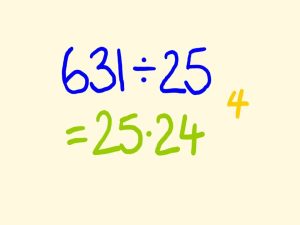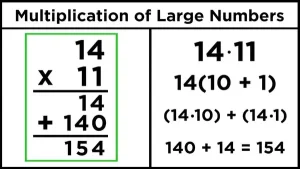Math can feel like a battle. Students often struggle with formulas and equations. This can make them nervous before tests. Math skills are important not only for passing exams, but also to develop critical thinking and problem solving abilities that will last a lifetime.
The good news is? You can use some clever tricks to help make math more fun and easier. These techniques can help boost your confidence, whether you’re studying for an exam or just looking to improve your math skills. Let’s look at some of the most effective strategies to improve your math skills!
Mental Math Tricks to Addition and Subtraction
Mental math can change the way you think about addition and subtraction. You can save time by using simple tricks to help you mentally calculate numbers.
Try breaking up numbers into smaller parts. If you want to add 29+47, divide them into 30+46 and adjust later by subtracting 1. Calculations are much easier.
Subtraction has secrets of its own. Round up the numbers instead of directly calculating from large numbers. Subtracting a rounded number can make the calculation easier. For example, subtracting 100 from the original value instead of starting at the first number.
Complements are another useful technique. Think about the way two numbers close to 10 or 100 fit together. This will help you reach your goal quickly.
These mental strategies will not only improve your speed, but also increase your confidence when you are faced with difficult questions on an exam.
Tricks to Multiplication and Divisison
Simple tricks can make multiplication and division easier.
Use your fingers to multiply by 9. Number your fingers left to right while holding both hands out. Fold down the fourth finger to multiply 9 by any number (let’s use 4). The left-hand fingers represent tens (10) and the right-hand fingers units (6). So, 9 times 4 equals 36.
To divide by 5, multiply the number by two and then shift the decimal place one place left. Calculate 45 div5, then 45 times two = 90 and move it to the right: 90 rightarrow 9.
These methods are not only faster, but they also add a fun factor to math learning! Use these techniques in practice sessions to improve retention and confidence during tests.
How to Memorize Formulas and Equations
There are many ways to make memorizing formulas and equations easier. Break complex formulas down into smaller parts. Understanding each component helps reinforce your memory.
Visual aids are powerful. Use colorful diagrams or flashcards to illustrate relationships between variables. Visual learners will find this method engaging and it also makes the learning process more fun.
Mnemonics can be a great tool. Create a memorable phrase or acronym by using the initial letters of terms that are important in a formula. This method makes memorization fun and memorable.
Test your memory under pressure by taking quizzes. It is important to repeat things over and over again. Try different techniques each time.
When possible, apply what you have learned to real-life situations. By connecting math concepts with real-life situations, you can improve your understanding and memory.
Using patterns and shortcuts to solve problems
Math is full of patterns. You can save time by recognizing patterns. When adding or subtracting, for example, look for pairs of numbers that equal 10. This simple method simplifies calculations.
Shortcuts are also important in solving problems. Consider breaking larger problems down into smaller parts by using distributive properties.
Visualizing shapes and their relationships can reveal hidden shortcuts for geometric problems. Knowing the area of familiar forms allows you to solve complex figures quickly and efficiently.
Studying these patterns will help you to identify them. The more you practice different techniques, the quicker you will be able to answer difficult questions in tests.
Mathematical formulas are not the only thing that mathematics is about. It’s also about how numbers and patterns interact to form those formulas.
How to solve word problems
A strategic approach can make them more manageable. Begin by reading the word problem twice. Understanding the question is important.
Then, highlight or underline key information like numbers and words that indicate operations. Words such as “total,””difference,”and “product” will provide valuable clues on how to proceed.
Visual aids can simplify complex scenarios. Making tables or diagrams helps you organize data and see connections easier.
By breaking the problem down into smaller pieces, you can often find solutions that were hidden by its complexity. This method will reduce overwhelm and boost confidence.
Double-check all your answers to the original question. This will ensure that they are in line with the context. This last check ensures that simple mistakes are not missed.
Practice makes perfect
It takes more than hard work to master math. It requires practice and dedication. This article will help you to improve your math skills by using the tricks and strategies described. Consistent practice is essential, whether you are working on mental calculations for quick calculations or trying to learn how to solve complex word problems.
Use flashcards for formulas or create quizzes to test yourself. Create quizzes or flashcards to help you learn formulas. You will find that the more you engage in mathematics, and the more it becomes easier.
Keep in mind that mathematicians face challenges on their journey. Accept those challenges as an opportunity to grow and learn. You’ll not only improve, but you will also gain confidence with the right techniques and persistence.
So get started! Watch your math skills soar as you practice diligently.




